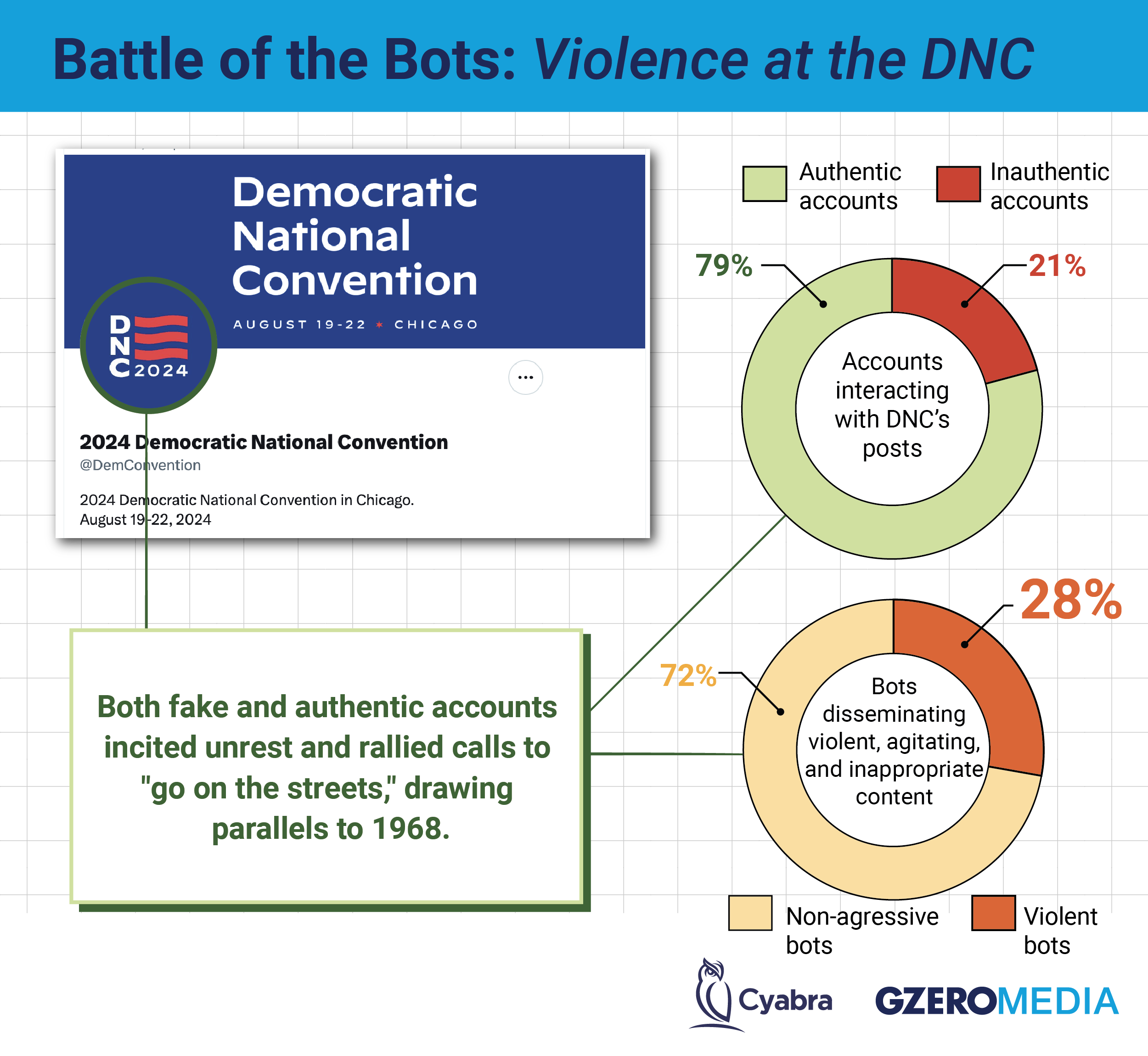When students protesting the war in Gaza took over a building onColumbia’s campus 56 years to the day after it was occupied by students protesting the Vietnam War, many began drawing parallels between the two waves of student protests.
Back in 1968, student demonstrators went home for the summer, only to resurface by the thousands at the Democratic National Convention in Chicago, and, long story short, things got ugly. The gathering erupted into violence, leading to the activation of the National Guard and the arrests of hundreds of protesters.
This August, the DNC is also in Chicago, which has some wondering: Could history repeat itself? GZERO posed the question to Cyabra, an Israel-based data firm that investigates fake actors on the internet. They analyzed the response to the DNC’s X post announcing the convention to see if fake accounts were inciting protests or calling for chaos.
They found that 11% of the accounts that commented on the post were fake. While that means the majority of accounts were authentic, 72% of the fake accounts were calling for violence at the DNC, with a large number rallying people to “go on the streets.”
Last weekend,student protestors retook Columbia’s lawns, setting up another Gaza Solidarity Encampment during the alumni weekend – proof that the student movement is not taking a summer vacation. So calls for chaos at the convention will likely continue to grow from both real and fake actors online as the event nears.
More For You
Behind every scam lies a story — and within every story, a critical lesson. Anatomy of a Scam, takes you inside the world of modern fraud — from investment schemes to impersonation and romance scams. You'll meet the investigators tracking down bad actors and learn about the innovative work being done across the payments ecosystem to protect consumers and businesses alike. Watch the first episode of Mastercard's five-part documentary, 'Anatomy of a Scam,' here.
Most Popular
Think you know what's going on around the world? Here's your chance to prove it.
